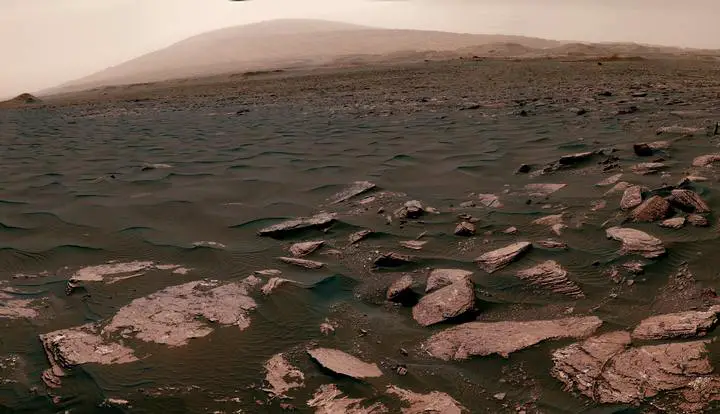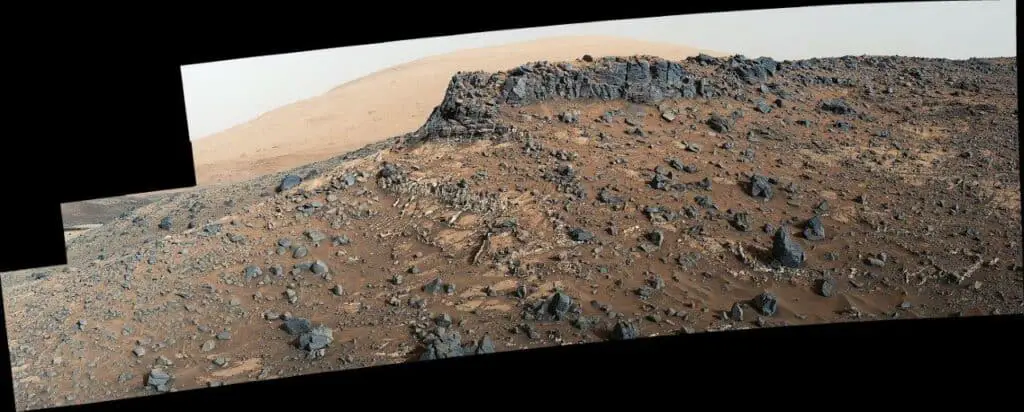“You have heat and chemical gradients … conditions favorable for the genesis and persistence life,” Berger said.
A new study reveals that thanks to high concentrations of zinc and germanium, similar to those that appear together on Earth, the red planet could offer the necessary conditions for the existence of microbes.
 |
| Seen here are dunes at the Gale crater on Mars. Image credit: NASA. |
New data collected on Mars by NASA, through the Curiosity rover, reinforces evidence about the possible existence of life on the red planet. In a study published in the Journal of Geophysical Research: Planets, researchers from the US aerospace agency refer to hydrothermal activity indicative of sedimentary rocks in a Martian crater, which broadens the range of habitability conditions.
According to scientists, concentrations of zinc and germanium found in the Gale crater are 10 to 100 times higher than those found in typical Martian crust.
Both chemical elements often appear together on Earth, in hydrothermal reservoirs containing sulfur.
Jeff Berger, a geologist at the University of Guelph (Ontario, Canada) and lead author of the new study, argues that the high concentrations of zinc and germanium in the Gale crater may be explained by hydrothermal activity in the area.
Thanks to a series of tests on the hydro-thermal conditions once present in the vicinity of the Gale crater, the mission of the Curiosity will now focus on determining if there were favorable environmental conditions for the life of microbes on that planet.
As noted by Phys.org, evidence of possible hydrothermal activity has been discovered by other Mars rovers in different locations on the surface of the red planet as well as in Martian meteorite samples. Scientists, using computer simulations, laboratory experiments and investigation of hydrothermal sites on Earth are trying to understand potential past hydrothermal activity on Mars.
So far they’ve discovered totally unexpected data that changes everything we’ve thought about Mars.
Extreme thermal environments are on Earth the habitat of a wide range of microbes which somehow have managed to adapt to these conditions.
In addition, these organisms may have been some of the first to evolve on our planet.
In the new study, using data from the Mars Science Laboratory APXS mounted on Curiosity’s robotic arm, scientists measured 16 major an into trace elements in the rocks found in the Gale crater, including zinc. They also analyzed using the Curiosity Rover’s chemistry and mineralogy instrument samples from its drill and scoop.
Gale Crater formed 3.5 to 3.8 billion years ago from a meteor impact early in Mars’s history. Rocks inside the Gale Crater are of great importance if we are to determine if or not Mars has the necessary conditions to host microbial life according to NASA.
As noted by Ashwin Vasavada, Curiosity mission project scientist at the NASA Jet Propulsion Laboratory in Pasadena, California, the new research illuminates what may have happened before and after the formation of the lake.
(H/T Phys.org)

